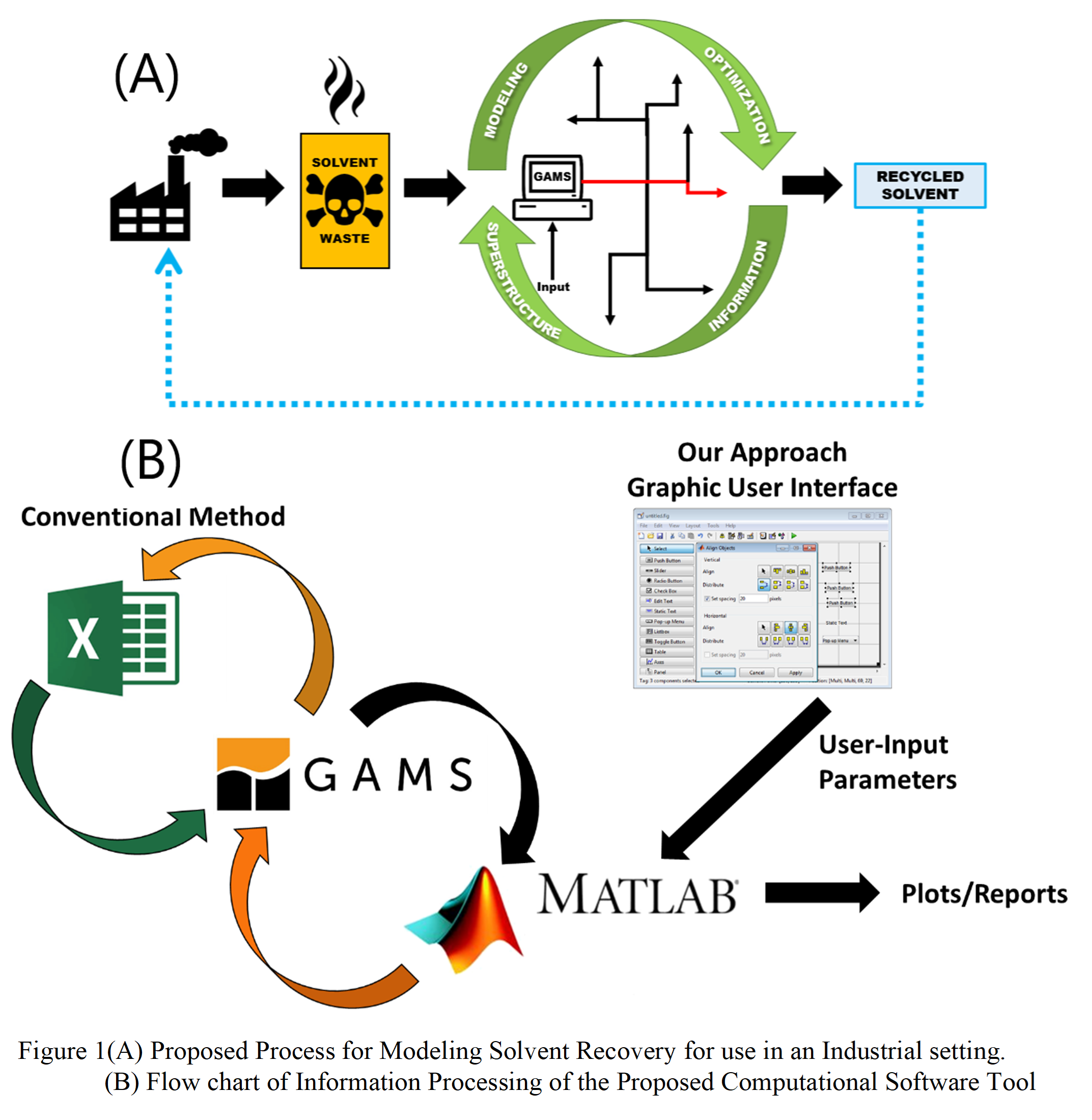(485f) Development of an Interactive Software Tool for Designing Industrial Solvent Recovery Processes
AIChE Annual Meeting
2022
2022 Annual Meeting
Computing and Systems Technology Division
Process Design in Energy and Sustainability: towards a net zero carbon economy
Wednesday, November 16, 2022 - 1:55pm to 2:12pm
Thus, our team is working towards creating such a user-friendly tool by combining knowledge of chemical and solvent properties, separation techniques, plant design, modeling, simulation and optimization methods. As Figure 1A depicts, this tool will provide a greener alternative, but also give a process engineer the ability to recycle used solvent back into the plant, which is economically favorable to purchasing fresh solvent.
To account for the myriad of chemicals that can be found in waste streams, a robust framework is needed. The framework has a maximal process flow diagram which is broken into different stages of separations. Each stage is comprised of multiple technologies and is aimed at one area of separation. As a result, the process flow diagram develops a superstructure which gives a multitude of technology combination pathway options for any one solvent waste stream. By reviewing literature on existing separation techniques, we created four unique stages in the superstructure: Solid Removal, Recovery, Purification, and Refinement (Yenkie, Wu, and Maravelias 2017; Biegler 1997; Geankoplis 2003). Common and novel technologies are allocated to the different stages based on the components they can separate in terms of their physical and chemical properties. These properties are taken from a comprehensive chemical database which is developed using sources such as the Design Institute for Physical Properties (DIPPR) (“DIPPR†2012). The coding environment, General Algebraic Modeling Systems (GAMS), is used to model the separation units and process flows as a multi-objective optimization problem, to maximize the solvent recovered while minimizing total cost and environmental footprints (Chea et al. 2020; Yenkie et al. 2016). To make the framework easily accessible, a Graphical User Interface (GUI) is created in MATLAB with the GAMS code operating in the back end. As Figure 1B depicts, the GUI communicates with the GAMS code and chemical database, finding the optimal technology pathway from the user inputs.
The GUI allows for a user to input components and parameters that model the waste stream being considered. Through the connection between MATLAB and GAMS, the solvent recovery process can be modeled in the GUI with the specific input parameters. After executing the code, economic, chemical, and environmental factors are displayed for the user to consider. The tool breaks the economic costs into an annualized cost breakdown, utility costs, consumable costs, labor costs, and overhead costs. The chemical factors report the purity level for each component recovered and the amount of solvent the selected pathway recovered. Lastly, the environmental factors report the environmental impact of the selected pathway against common waste handling methods. Thus, this tool provides an accessible option for engineers to develop a solvent recovery waste handling system for their chemical plant.
